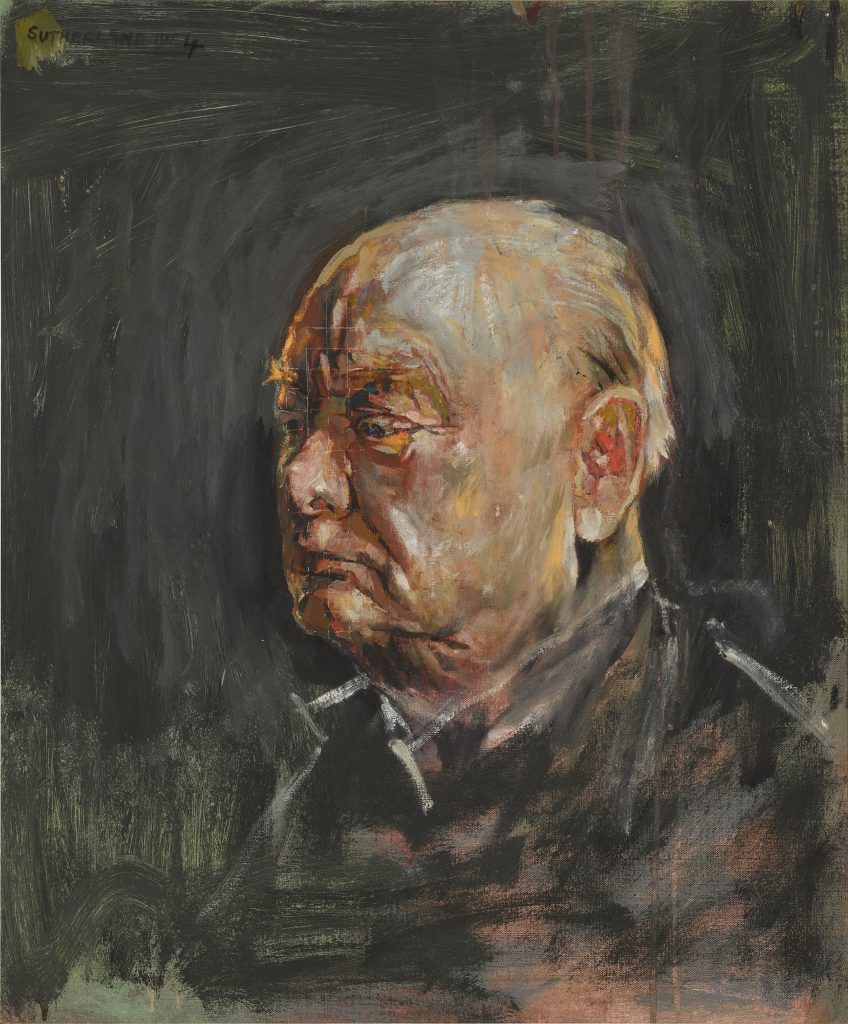
Graham Sutherland – Surviving study for a portrait of Churchill commissioned by Parliament. UPDATE: THIS SOLD FOR £660,000
One of the best surviving portraits of Winston Churchill by Graham Sutherland – an 80th birthday present commissioned by parliament – comes up at Sotheby’s in London on June 6. The Houses
of Parliament commissioned the portrait thus setting up a new chapter in Churchill’s life story which ended with the painting being burned in an episode immortalised in popular culture by The Crown. On offer is an intimate painted study created in preparation for the final work.
Winston Churchill was one of the most reproduced characters, described by curators of the National Portrait Gallery in London as “the most famous face of the 20th century”. The legacy that he left rests in no small part on the extraordinary care he took to cultivate his public image: from the ‘V for Victory’ to his cigars and bowler hats. Over the course of his life, he was painted by William Orpen, John Singer Sargent, Walter Sickert, William Nicholson and Oswald Birley, among others.
Churchill was extraordinarily concerned by how he was represented, and often gave withering
assessments to those who dared portray him. The portrait painted by Graham Sutherland in 1954
proved to be the most objectionable. Sutherland was at the very forefront of modern British art at the time, eclipsing Francis Bacon with whom he shared a gallery. It was Churchill’s intention to be painted in his Garter robes but Sutherland insisted that he was to be painted in the clothes which Parliament and the public knew him. Sutherland did ultimately produce a painting of him in his garter robes, now in the Beaverbrook Art Gallery, Fredericton. Churchill was keen to inspect the portrait as the project went along, but Sutherland insisted that he
mustn’t. It was Clementine who first viewed the work at Sutherland’s studio once it was complete, and
she was so pleased with it that she cried tears of joy and took a photograph home with her. Sadly, this
celebration was short lived. On seeing the work, Churchill wrote to his personal doctor Lord Moran describing the work as “filthy and malignant”, followed by a letter to Sutherland and his wife that it was not suitable as a presentation from the Houses of Parliament and so he did not want to be part of the ceremony. In the end, Churchill attended the ceremony but uncharitably derided the work as a
“striking example of Modern art”, to a peal of laughter from the audience. The press were in the large part unforgiving, the Telegraph and the Daily Express calling for the work
to be thrown away or even burnt. The Spectator went against the pack and described the work as “by
far the best record of the Prime Minister which we shall bequeath to posterity”. However, this vision
was not to be realised. Within two years, such was the rancour with which the painting was viewed at Chartwell, that Churchill’s loyal secretary Grace Hamblin employed her brother to take it away and burn it (a move that received Clementine’s approval, who despite her original enthusiasm had gradually turned against it too, feeling betrayed).



